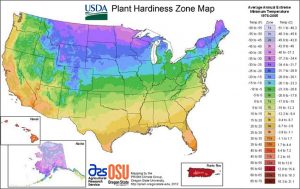Spinach Gardening
General
Spinach Gardening is growing a cool-weather crop that if handled correctly will produce in the garden. The plant prefers a more alkaline soil – keep that in mind. If allowed to grow into the hot weather of summer with its longer days it may bolt – go to seed.
Spinach seed does not store well so you should not keep for more than a few years, I have had seeds germinate after two years but the seed will lose its virility quicker than other seeds – or so I believe.
Back to Garden Index
Types/Varieties
There are both smooth-leafed and dimpled or savoy-leafed spinach varieties. Different varieties are grown by many seed companies including Burpees (my favorite) and High Mowing Seeds (A very close second)
Where to Plant
Select a planting site with full sun (at least 6 hours) and well-drained soil.
Planting

I have read that spinach plants don’t do well when transplanted. I have grown them both ways (direct sowing and transplanting) without much headache. Sow spinach seed as soon as the soil can be worked; however, if the weather turns cold or wet, the risk of having nothing sprout or a prolonged germination period may happen.
Sow seeds 1/2 inch deep and two inches apart in rows 12 inches to 18 inches apart. One ounce of spinach seed should be enough to plant 100 feet of row. If conditions are good the seeds should germinate in about 1 to 2 weeks. As the seedlings emerge, thin to about 3 inches apart. When the plants become large enough that they touch each other, pull every other one to give the plants some space (eat what you pull) since overcrowding stunts growth and encourages plants to go to seed. If you want, at this point apply some 10-10-10 fertilizer around the plants at the rate of 3 ounces for each 10 feet of row.
Sunlight and Soil Requirements
Spinach does best when growing in moist, nitrogen-rich soil. Plants prefer soil pH of between 6.5 to 7.5. Spinach does not do well in acid soil. If necessary, add calcium to your soil around the spinach plants.
Care
Water the new seedlings well in the spring.
Roots are shallow and easily damaged so do not use garden rakes around the plants
Keep soil moist with mulching.
Spinach can tolerate the cold; it can survive a frost
Cover the crop with shade cloth if the temperature goes above 80 degrees.
Succession Planting
In the north, sow seeds weekly in the spring until 6 weeks before average daily temperatures are expected to be over 75°. In late summer, as soon as temperatures average below 75°, start weekly sowing until 6 weeks before temperatures are expected to start dipping into the 20’s.
In the south grow spinach as a late autumn to winter crop or late winter to spring crop and use the same temperature parameters described above as a planting guide.
Harvesting
In six weeks to eight weeks, start harvesting any plant that has leaves 6 inches to 8 inches long. You can harvest the entire plant by cutting at the soil surface.
A good crop would be 3 to 5 lbs. per 10 feet of row. If you are a “12 month gardener” you will want to plant about 10 feet to 20 feet of row per person. The leaves contain iron, calcium, and vitamins A, B, and C
Problems
Spinach blight, a virus spread by aphids, causes yellow leaves and stunted plants.
Downy mildew, which appears as yellow spots on leaf surfaces and mold on the undersides, occurs during very wet weather. Reduce the spread of disease spores by not working around wet plants. Avoid both of these diseases by planting resistant cultivars.
Leafminer larvae can burrow inside leaves and produce tan trails (these are my biggest problem).
Slugs also feed on spinach.
Back to Garden Index
